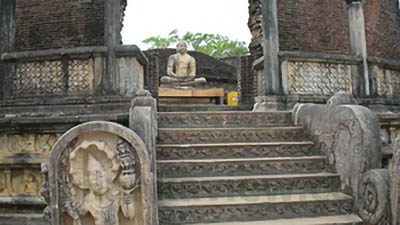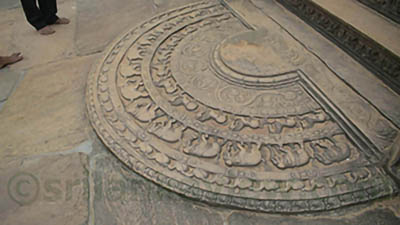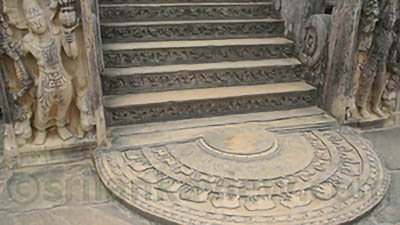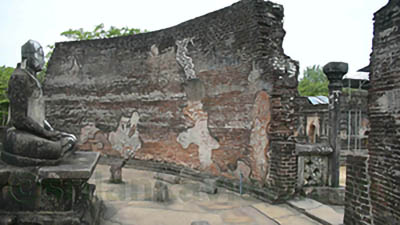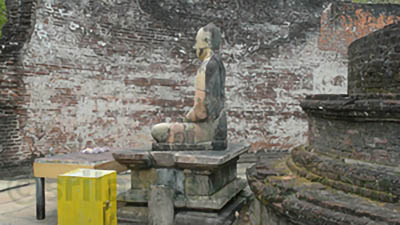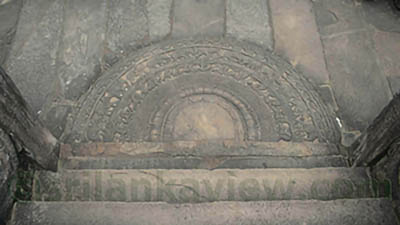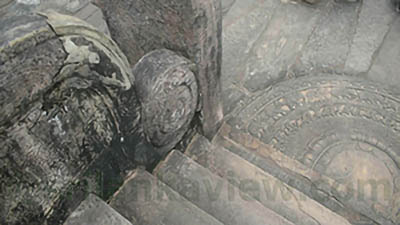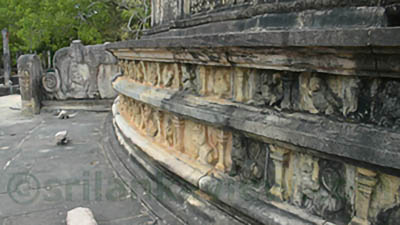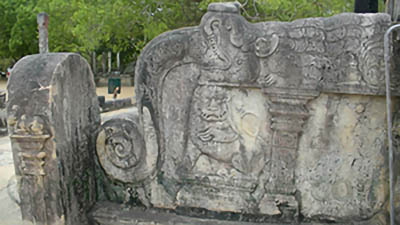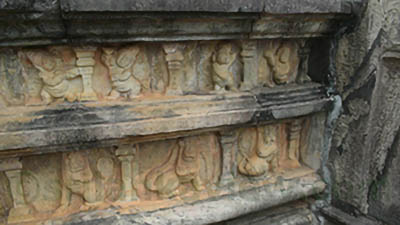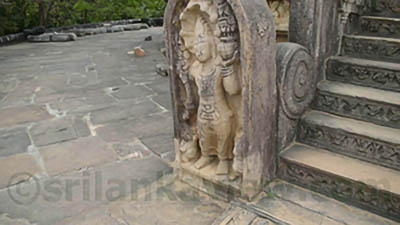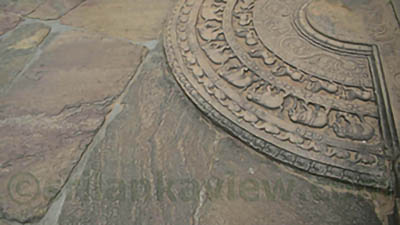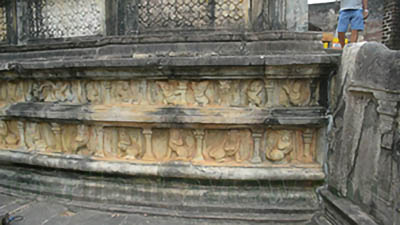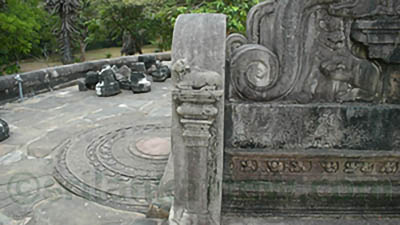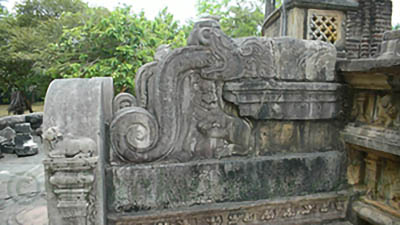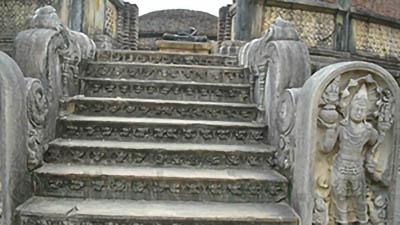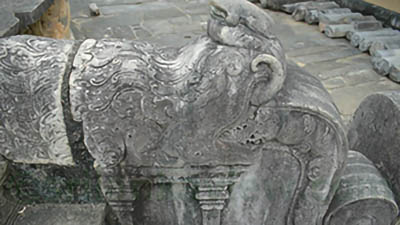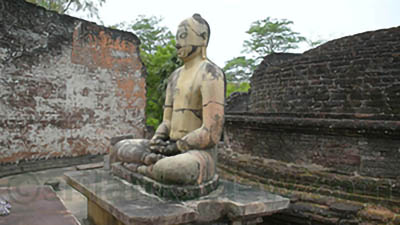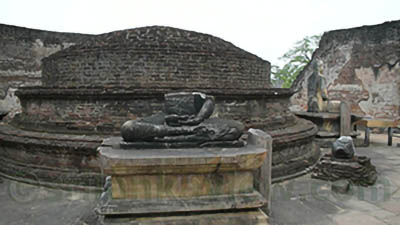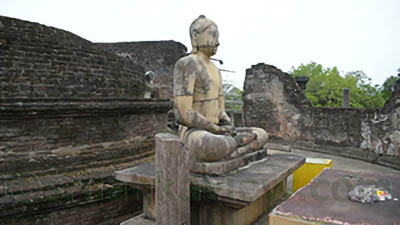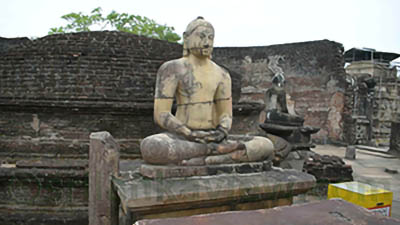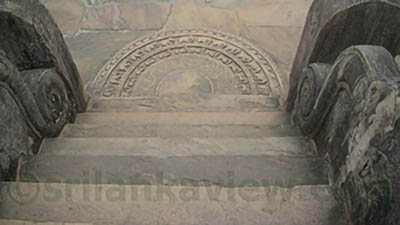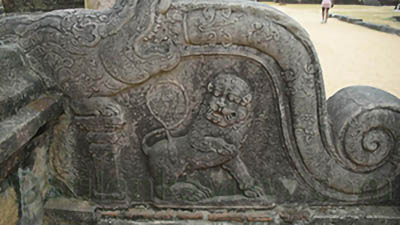Vatadage
සිංහල භාෂාවෙන් කියවීමට Navigation Bar හි ගූගල් පරිවර්තකයා භාවිතා කරන්න≈≈≈≈≈≈≈≈≈தமிழ் மொழியில் படிக்க நேவிகேஷன் பாரில் கூகுள் டிரான்ஸ்லேட்டரைப் பயன்படுத்தவும்
Vatadage, Polonnaruwa - its History, Buddha Statues, Moonstones and Sculpture
Vatadage History and Details
The meaning of Vatadage is 'The Circular Relic House'. Vatadage is believed to have been constructed during the reign of Parakramabahu I (1153-1186 CE), a prominent king of the Polonnaruwa Kingdom. The history of Vatadage runs to the beginning of Polonnaruwa era and King Nissankamalla had renovated and embellished the original Vatadage. It represents the flourishing Buddhist culture and the patronage of Buddhism during that era. Vatadage is locaed inside the Sacred Quadrangle that have several temples and shrines built on a large raised terrace. Entrance to Vatadage and other sacred monuments are by the stairs on the East side of the terrace. Polonnaruwa Vatadage is renowned for its exceptionally well-preserved examples of Muragala (Guardstone) and Sandakada Pahana (Moonstone) within the context of Polonnaruwa architecture.
The primary purpose of Vatadage was to protect and venerate the sacred Tooth relic of Buddha. The central shrine, accessible through elaborately carved entrances, housed the relic. The relic was considered a sacred object of worship and was believed to possess spiritual power and significance.
Vatadage showcases several unique architectural features that set it apart from other structures.
It holds immense cultural and religious significance as a place of worship and devotion. It served as a focal point for religious ceremonies, rituals, and pilgrimages during the Polonnaruwa Kingdom. Vatadage represents a unique architectural style that was prevalent during the Polonnaruwa period. It is characterized by a circular structure with concentric rows of stone pillars and elaborate carvings. The outermost ring of pillars creates a circumambulatory path for devotees to walk around the central shrine. The pillars are intricately carved with decorative patterns and motifs, showcasing the skilled craftsmanship of the time. The circular shape represents the eternal nature of the Buddhist teachings, while the circumambulatory path around the central stupa symbolizes the cycle of birth, death, and rebirth. Devotees would walk around the stupa as part of their religious rituals and practices.
At the heart of Vatadage is a central stupa or dagoba, which is the focal point of the structure. The stupa symbolizes the enlightened mind of the Buddha and serves as the spiritual center of the relic house. The stupa is usually surrounded by a raised platform, enhancing its prominence
Vatadage has four entrances, each facing one of the cardinal directions, North, South, East and West. These entrances are intricately decorated with elaborate stone carvings, including guardian figures, mythical creatures, and floral motifs. The entrances are designed to create a sense of grandeur and reverence for those entering the sacred space.
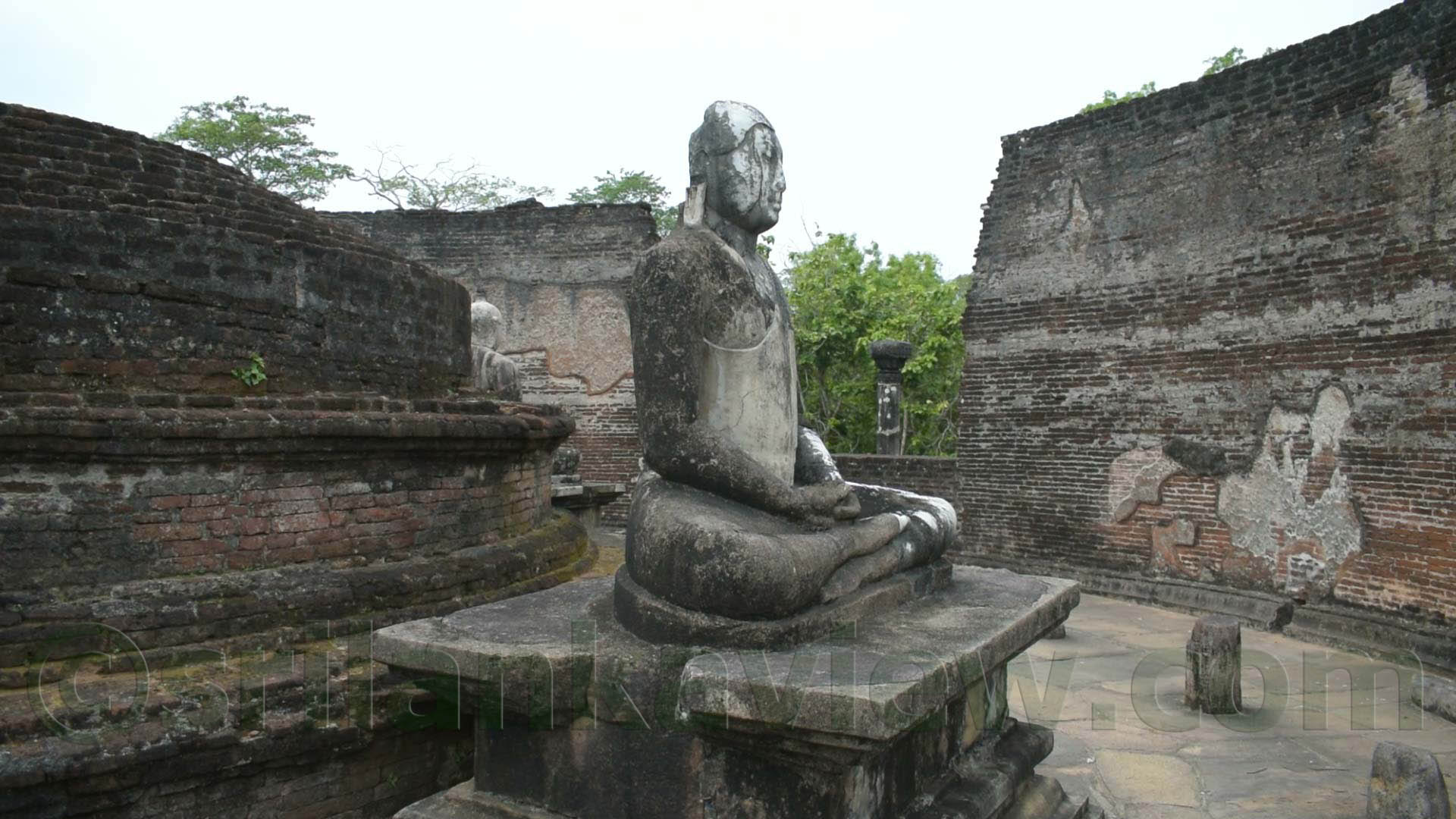
Vatadage Buddha Sculpture
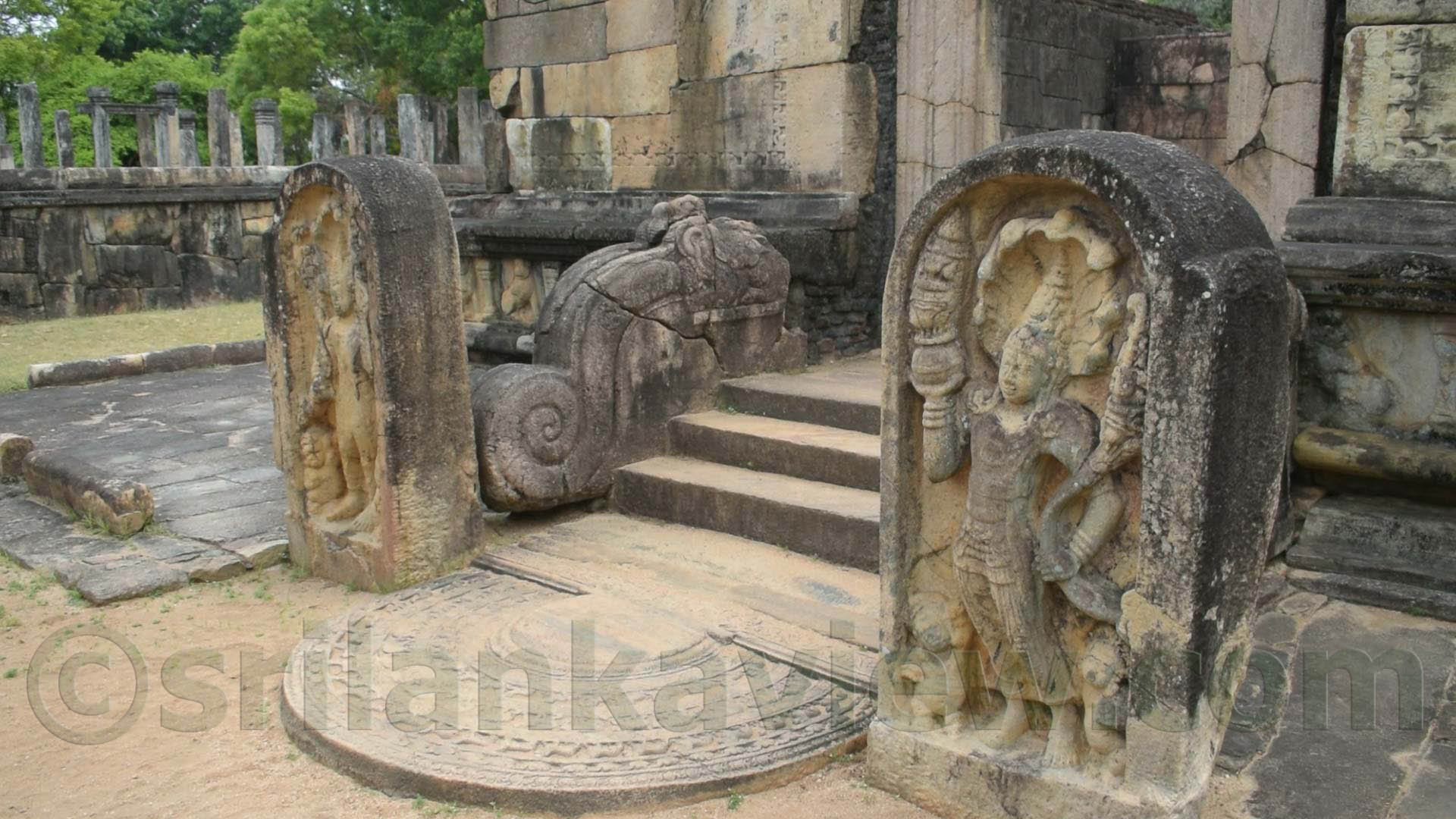
Guardians & Balustrade sculpture - Vatadage
වටදාගෙය, පොළොන්නරු රාජධානියේ කීර්තිමත් රජෙකු වූ 1 වන පරාක්රමබාහු රජුගේ (ක්රි.ව.1153-1186) පාලන සමයේදී ඉදිකරන ලද්දක් ලෙස සැලකේ.
ගල් කුළුණු පේළි සහිත වෘත්තාකාර සැලසුම වටදාගෙයහි සුවිශේෂී ලක්ෂණයකි. ගල් කුළුණු, අලංකාර රටා සහ මෝස්තර වලින් ඉතා සංකීර්ණ ලෙස කැටයම් කර ඇති අතර, එකල දක්ෂ ශිල්පීය හැකියාවන් විදහා දක්වයි.
පොළොන්නරුව වටදාගේ සෑය තිබෙන ඉහළ වේදිකාව වටකරමින් පහළ මට්ටමේ දෙවන වෘත්තාකාර වේදිකාවක් ඇත. ආසන්න වශයෙන් විෂ්කම්භය අඩි 120 ක් සහ පොළව මට්ටමේ සිට උස අඩි 4 අඟල් 6 වන මෙම පහළ වේදිකාව, කැටයම් සහිත ගල් රැඳවුම් බිත්තියකින් සමන්විත වේ. මෙම පහළ වේදිකාවේ සිට වටදාගෙයට පිවිසුම් හතරක් ඇති අතර, ඒ සෑම එකක්ම සතර දිශාවෙන් එකකට මුහුණ ලා ඇත.
වටදාගෙයි හි මූලික අරමුණ වූයේ බුදුරජාණන්වහන්සේගේ ශ්රි දළදා වහන්සේ ආරක්ෂා කිරීම, ගෞරව කිරීම සහ වන්දනාමාන කිරීමටය. විස්තීර්ණ ලෙස කැටයම් කරන ලද පිවිසුම් හරහා ප්රවේශ විය හැකි මධ්යම මණ්ඩපයක ධාතූන් වහන්සේ තැන්පත් කර තිබෙන්නට ඇතැයි විශ්වාස කරනු ලැබේ
Polonnaruwa Vatadage Information based on Prof. S.Paranavitana's book, 'The Stupa in Ceylon'
• The dimensions of stupa at the center of the Vatadage is relatively small, with a base diameter of 27' 8".
• Placed against each of the four principal faces of the stupa are seated images of the Buddha on stone pedestals.
• The stupa is situated on a paved circular platform with access provided through flights of steps on the four cardinal points.
• The retaining wall of the platform, as well as the wingstones, guardstones, moonstones, and staircases, are abundantly adorned with sculptures.
• Three concentric circles of stone pillars, similar to those found at the Thuparama in Anuradhapura, once encircled the stupa. However, none of the pillars from the two inner circles remain standing. The remnants suggest there were 16 pillars in the first circle and 20 in the second, but it is uncertain to which circle the recovered pillar with a height of 14 ft. 2 in. belonged. Considering the capital, it would have stood at 16 ft. 2 in. high.
• The outer circle consisted of 32 pillars, each 8 feet high, including the capital.
• A notable feature of the Vatadage is a low, highly sculptured screen measuring 2 ft. 9 in. in height. This screen runs around the platform in alignment with the outer circle of pillars. It serves a purpose within the architectural scheme and corresponds to a similar feature observed at the Madirigiriya stupa.
• Two feet behind the decorative screen and between the second and third circles of pillars, there is a circular brick wall. This wall encloses the shrine at the center of the platform and has openings for the four gateways. Similar brick walls have been observed in the same position at Thuparama, Lankarama, and Madirigiriya, but the wall at the Vatadage in Polonnaruwa is almost intact due to the use of high-quality lime mortar in its construction.
• The brick wall, except for the base and cornice moldings, is plain and lacks decorative features such as pilasters. It is 2 ft. 2 in. thick and nearly 15 feet in height.
• The space between the brick wall and the stone screen is closed off by the right angle returns of the screen at the entrance.
• The capitals of the outer circle of pillars feature tenons.
• The Vatadage at Polonnaruwa has a second circular platform on a lower level, encircling the upper platform where the stupa stands. This lower platform, approximately 120 feet in diameter and 4 ft. 6 in. in height, has a stone retaining wall with molding. The surface of the lower platform was paved with stones.
• On the lower platform, there appear to have been two concentric circles of wooden pillars, as evidenced by the round holes that served as sockets for these pillars on the pavement.
• A rectangular projection forming a porch is located on the north side, providing access to the lower platform. The entrance on this side is embellished with typical architectural decorations found at the entrances of ancient Sinhalese structures.
Vatadage Ground Plan
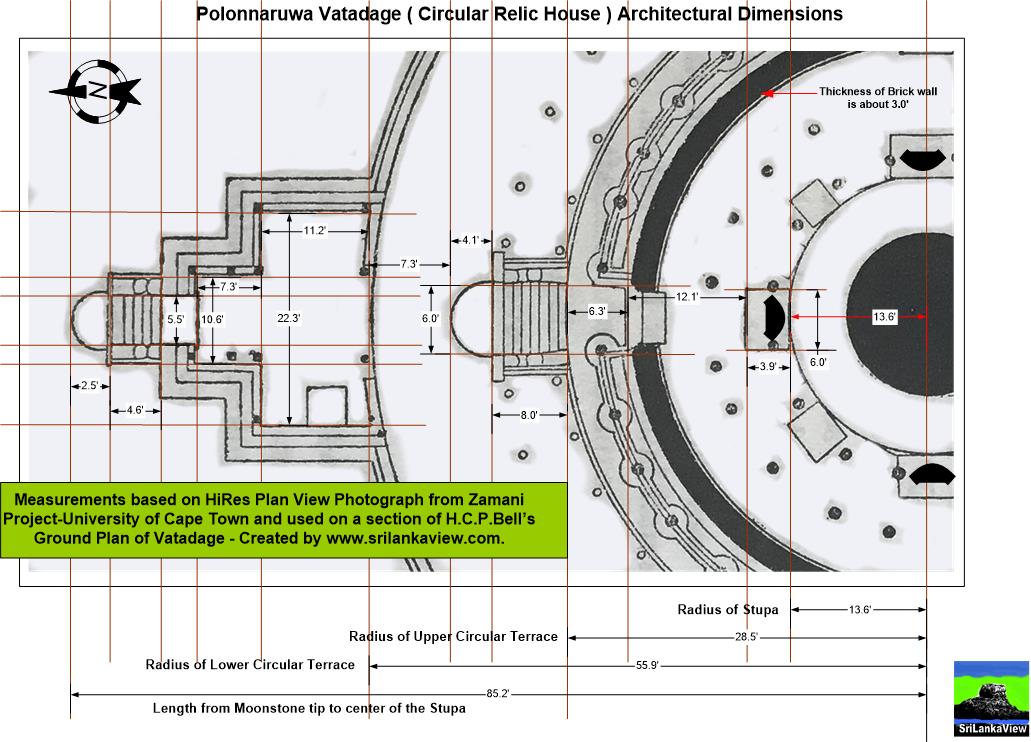
Dimensions of Vatadage Structure
• The principal seated Buddha Statue one see as coming up from the entrance flight of steps, is facing the Nothern cardial direction• The height of the Buddha statue is 4.9 feet and the width at seated position is 4.6 feet.
• The height to the top of Buddha statue from the granite floor is 8.3 feet.
• The stupa diameter is 27.2 feet.
• The stupa height is 10.5 feet.
• The diameter of the Upper circular terrace is 57.0 feet
• The diameter of the Lower circular terrace is 119.8 feet
• The length of the Vatadage when viewed from East or West directions (maximum length) 141.1 feet
• The height of Vatadage from ground level to top of brick wall is 23.8 feet
• The total area of the Upper circular terrace is 2552 sq.feet
• The total area of the Lower circular terrace is 9820 sq.feet
• ≈≈≈ Measurements derived by Image scaling ≈≈≈
Art and Architecture of Vatadage
The Vatadage features a circular design, which is characteristic of vatadages. It consists of concentric rings of stone pillars and a raised platform. The Vatadage is supported by two rows of stone pillars, forming an inner and outer circle. These pillars are intricately carved with decorative motifs. The inner circle pillars are slender and feature detailed carvings of lotus flowers, dwarfs, and mythical creatures. The entrances to the Vatadage are marked by beautifully carved guardstones. These stone slabs depict guardian deities, such as dwarfs, lions, and elephants. The guardstones serve as protectors of the sacred space and exhibit the artistic skill of the craftsmen. The moonstones at the foot of the staircases leading to the Vatadage are striking examples of stone carving. Moonstones are semi-circular stone slabs that represent the transition from the profane world to the sacred. The moonstones at the Polonnaruwa Vatadage feature intricate carvings of animals, plants, and mythological creatures. The upper platform of the The entrances to the Vatadage are marked by beautifully carved guardstones. These stone slabs depict guardian deities, such as dwarfs, lions, and elephants.
Vatadage Moonstone
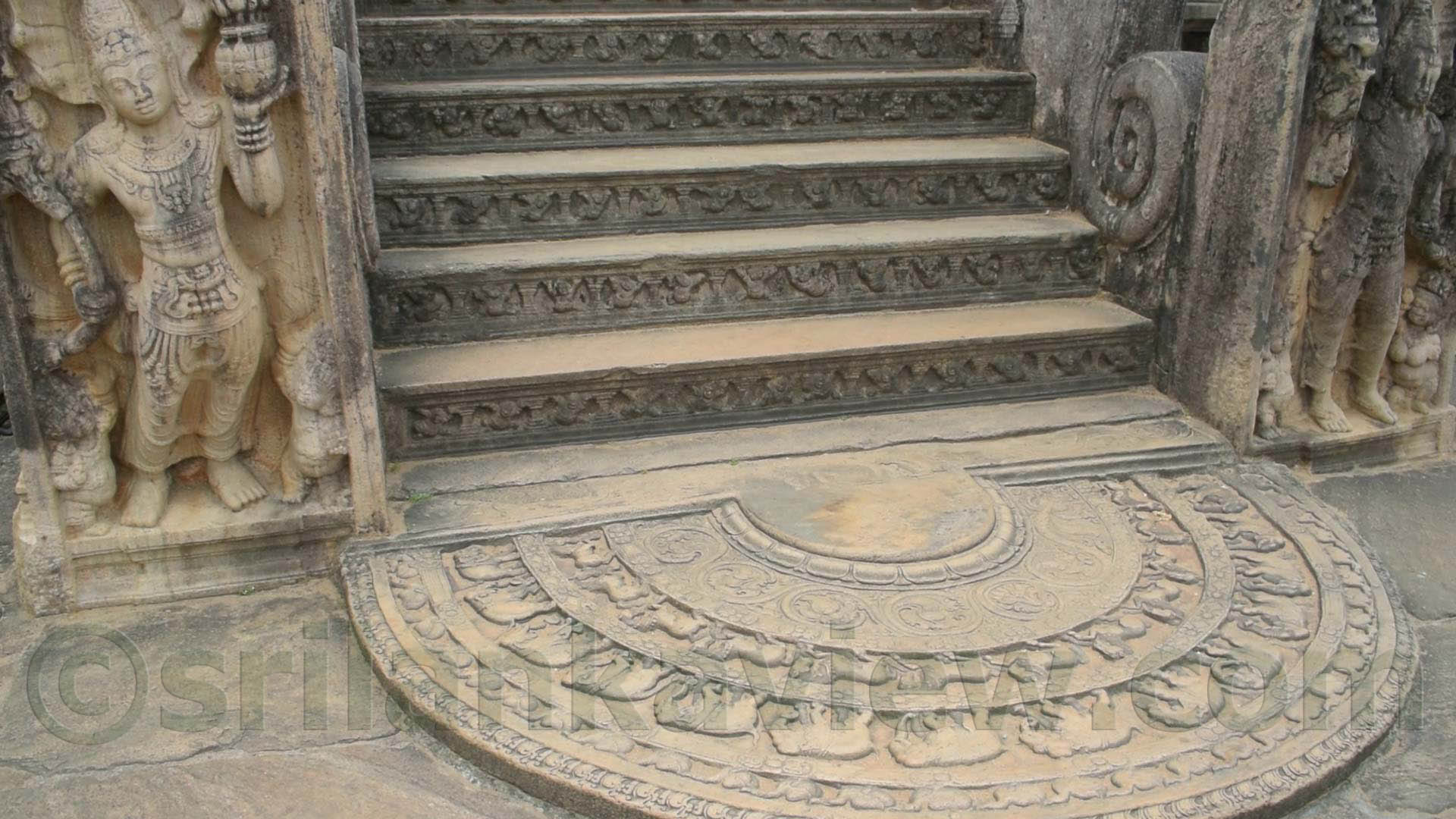
The name ‘Vatadage’. which means ‘Circular Relic-House’, is not peculiar to the monuments at Polonnaruwa and Madirigiriya. In Sinhalese writings dating from the thirteenth and fourteenth centuries, the name is applied to the shrine of the Thuparama at Anuradhapura, and that of Attanagalla, as well as to the Polonnaruva example.’ Thus, in the opinion of the Sinhalese authors of the thirteenth century, the Thuparama and the Vatadage of Polonnaruwa belonged to the same type of structure—an opinion which has been independently arrived at by Mr. Smither by examining the designs of the two edifices.
.
.
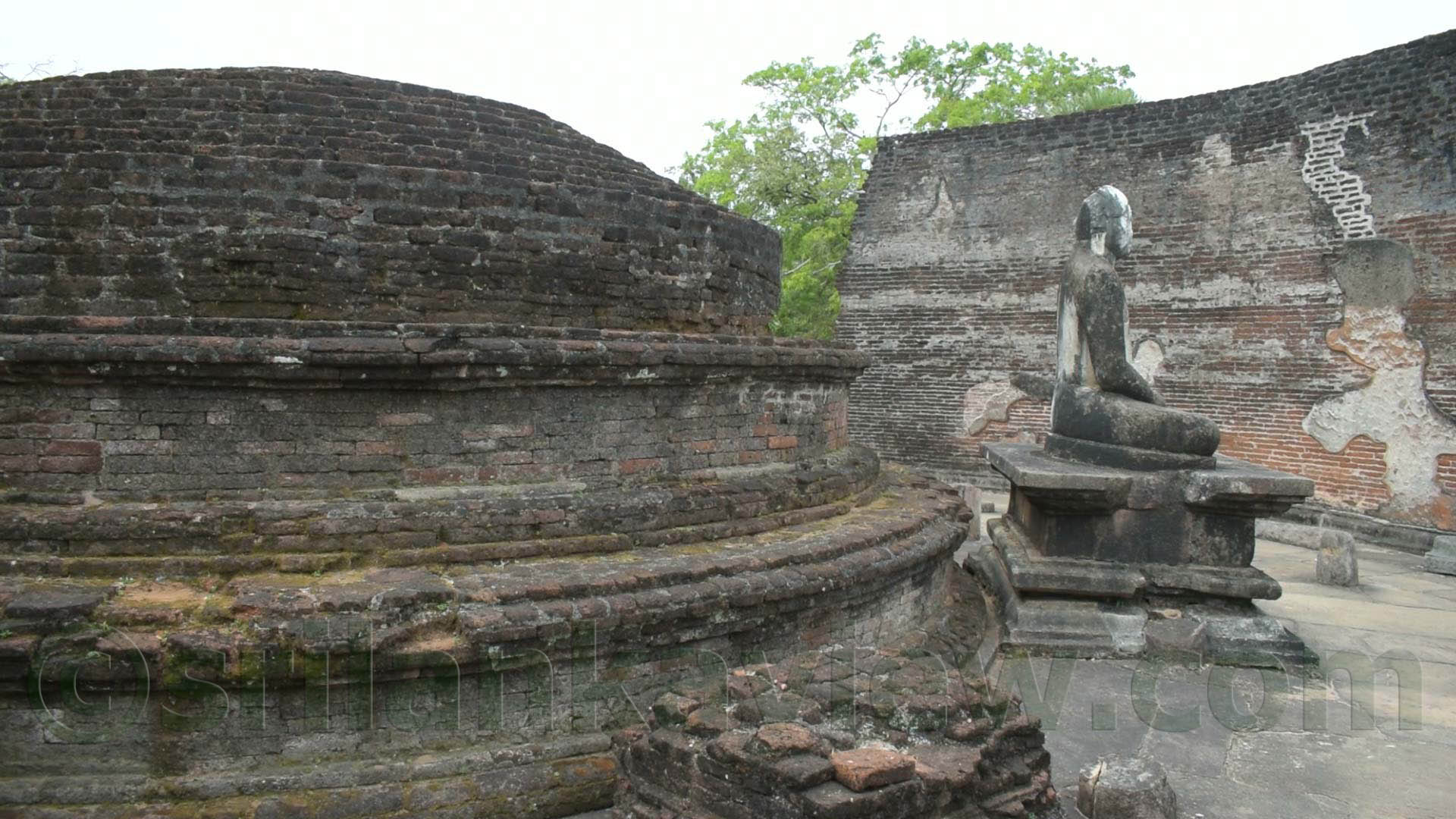
Vatadage Stupa
.
.



 copy.jpg)
